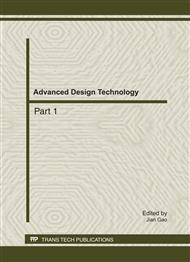p.2068
p.2074
p.2078
p.2084
p.2095
p.2104
p.2110
p.2114
p.2120
The Design and Comparison Study on the Large-Scale End-Effector of Large Space Manipulator
Abstract:
The space manipulator which is mounted on a space structure or spacecraft to manipulate space payloads is important for the on-orbit-servicing. Its manipulation tasks depend on its end-effector. The flexibility of the large space manipulator will result in residual vibration on its tip, and let the manipulator have poor capability of end positioning. To overcome the drawbacks mentioned-above, the end-effector needs strong capability of misalignment tolerance and soft capturing. On the base of these requirements and analysis, two kinds of end-effector schemes are presented and designed in detail. The essential performances are in comparison based on the results of dynamic simulations and experiments. Consequently, the conclusion is drawn that the steel cable-snared end-effector which captures the interface by winding the grapple fixture probe, is the best scheme that can combine the ability of soft capturing and great misalignment tolerance perfectly.
Info:
Periodical:
Pages:
2095-2103
Citation:
Online since:
August 2011
Authors:
Price:
Сopyright:
© 2011 Trans Tech Publications Ltd. All Rights Reserved
Share:
Citation:


